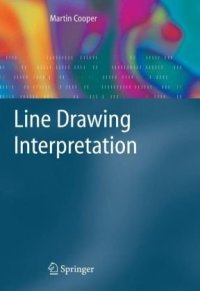
Ebook: Line Drawing Interpretation
Author: Martin Cooper (auth.)
- Tags: Computer Imaging Vision Pattern Recognition and Graphics, Computer-Aided Engineering (CAD CAE) and Design, Mathematical Logic and Formal Languages, Image Processing and Computer Vision, Cognitive Psychology, Discrete Mathematics in Co
- Year: 2008
- Publisher: Springer-Verlag London
- Edition: 1
- Language: English
- pdf
The computer interpretation of line drawings is a classic problem in artificial intelligence and has inspired the development of some fundamental AI tools, including constraint propagation, probabilistic relaxation, tractable constraints, and (most recently) local simplification of optimisation problems.
Based on the author’s considerable research experience, this book looks at line drawing interpretation and constraint satisfaction, covering several landmark results in the field. It contains state-of-the-art reviews of work in both drawing interpretation and discrete optimisation, and is not just restricted to drawings of polyhedral objects, but also covers complex curved objects. Its novel approach to drawing interpretation combines new constraints with recent advances in soft constraint programming.
The book will become a standard reference in the field with its coverage of many theoretical results with formal proofs, particularly concerning necessary-and-sufficient conditions for realizability, simplification operations for combinatorial problems and tractability of drawing interpretation.
Martin Cooper makes this fascinating topic accessible not only to computer scientists, but also to mathematicians, psychologists and cognitive scientists – indeed to anyone intrigued by optical illusions and impossible or ambiguous figures.
The computer interpretation of line drawings is a classic problem in AI and has inspired the development of some fundamental AI tools. This novel approach to drawing interpretation combines new constraints with recent advances in soft constraint programming, Based on the author’s considerable research experience, this book contains state-of-the-art reviews of work in drawing interpretation and discrete optimisation and is not just restricted to drawings of polyhedral objects, but also covers complex curved objects. The book will become a standard reference in the field with its coverage of many theoretical results with formal proofs, and is written in an accessible style making it attractive to any one intrigued by optical illusions and impossible or ambiguous figures, including computer scientists, mathematicians, cognitive scientists and psychologists.